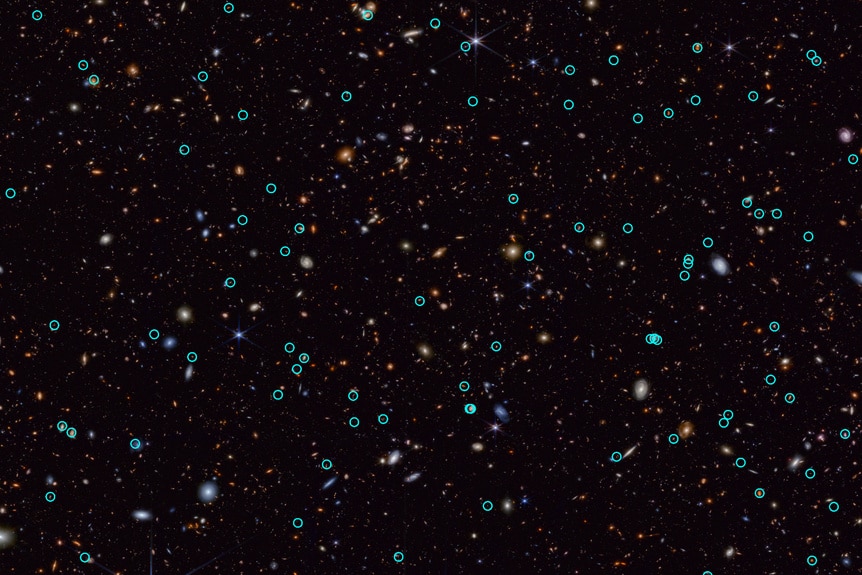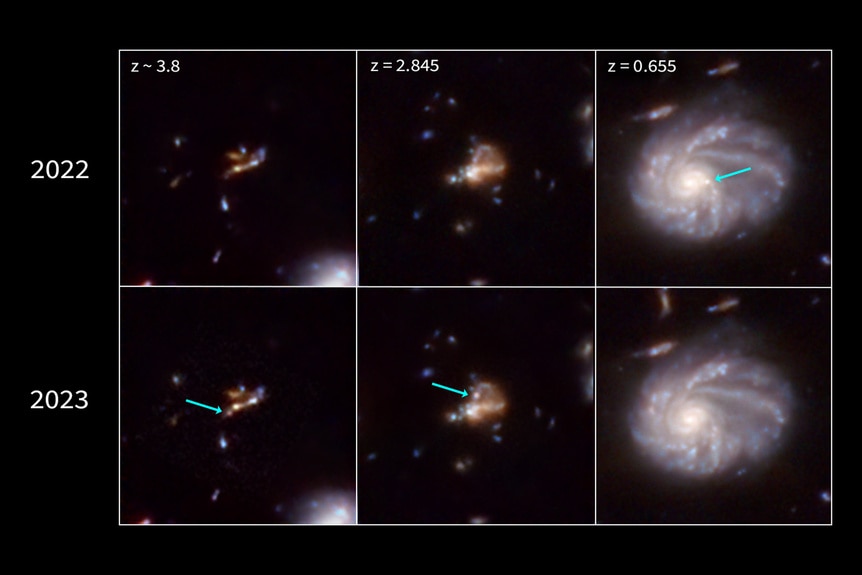Create a free profile to get unlimited access to exclusive videos, sweepstakes, and more!
JWST's JADES Deep Field Observations Reveal Dozens of Supernovae from the Early Universe
Some of the first big bangs after THE Big Bang.

In 1999 (and in a fictional version of our world), astronaut John Crichton settled into the pilot’s seat of the experimental Farscape-1. His mission was to fly around the Earth, using the planet’s gravity to ramp up his ship’s speed, in preparation for future deep space missions. Along the way, he accidentally fell into a wormhole and landed on the other side of the galaxy, in the Uncharted Territories.
In the real world, most of our deep space exploration happens by way of astronomy. While Farscape (streaming now on Peacock) took viewers to the edge of the galaxy, NASA’s orbiting James Webb Space Telescope (JWST) is taking astronomers to the farthest reaches of the observable universe. Recently, some of those astronomers identified dozens of ancient supernovae in data from the JWST Advanced Deep Extragalactic Survey (JADES) program.
For More on Supernovae:
Betelgeuse Did Explode in 2019, But it Wasn't a Supernova
Artificial Intelligence Discovered Supernova Without Human Help
Supernova Alert! Now Astronomers Have a Warning System for When Stars Go Boom!
See the Oldest Supernovae Ever Observed, Courtesy of JWST
"Webb is a supernova discovery machine," said Christa DeCoursey, a third-year graduate student at the Steward Observatory and the University of Arizona in Tucson, in a statement. “The sheer number of detections plus the great distances to these supernovae are the two most exciting outcomes from our survey.”
A team of astronomers dug through JADES data, comparing observations taken at different times, looking for objects which changed in brightness. Those transient objects are mostly supernovae from the early universe, including some of the most distant supernovae ever observed. The results were presented at the 244th meeting of the American Astronomical Society, which took place between June 9 and 13, 2024, in Madison, Wisconsin.
Prior to the JADES survey, only a few supernovae older than about 3 billion years had ever been found. The JADES data has unveiled about 80 from that time period or older, including one which went off only 1.8 billion years into the universe’s adolescence. All of those stellar explosions were found inside a patch of sky roughly the size of a grain of rice held at arm’s length.
JADES presents an exciting opportunity to study supernovae much older than we could before and with a larger sample size. Modern stars have been enriched with heavy elements by the explosions of stars that came before them, but the earliest stars didn’t have that benefit. Astronomers are curious if these ancient supernovae behave the same or differently from closer, more modern novae.
“We’re essentially opening a new window on the transient universe,” said STScI Fellow Matthew Siebert, who is leading the spectroscopic analysis of the JADES supernovae. “Historically, whenever we've done that, we've found extremely exciting things — things that we didn't expect.”
While we aren’t going there ourselves, instruments like JWST allow astronomers a level of cosmic exploration that the likes of John Crichton could only dream about. If you want to see the real Uncharted Territories, this is it.
Catch the complete run of Farscape, streaming now on Peacock.
















